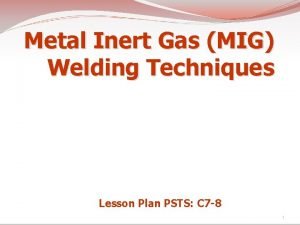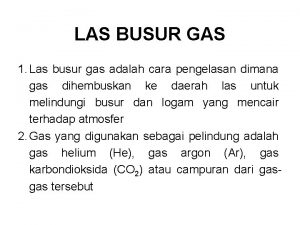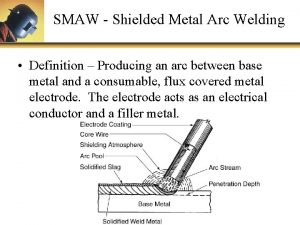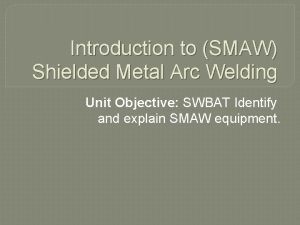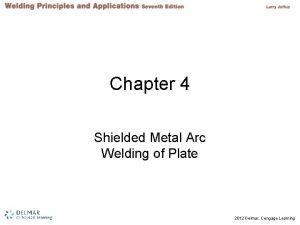GAS METAL ARC WELDING MODES OF METAL TRANSFER




- Slides: 4

GAS METAL ARC WELDING MODES OF METAL TRANSFER

� Rational: • Knowing and understanding the modes of metal transfer (arc type) and how to change/control them is an essential skill for a well trained welder. • Listed below are three common GMAW arc types. � Short Circuit Transfer • Closed arc type • Electrode contacts grounded base metal • Welding circuit is short circuited and re-fires automatically • Self regulating arc • Lowest amount of delivered voltage and amperage • Works well for thin material (up to 3/16”) • Weld spatter can be a problem • Creates the smallest heat affective zone

� Globular Transfer • Open arc type • Electrode does not contact grounded base metal • Electrode melts in globs larger then the electrode diameter • Gravity separates filler metal from electrode • Filler metal may occasionally contact base metal (short circuit) • Largely uncontrollable • High amount of weld spatter (Requires the most post-weld clean up) • Little commercial application

� Axial Spray Transfer/Pulse Spray Transfer • Open arc type • Electrode does not contact grounded base metal • Electrode melts in droplets smaller than the electrode diameter • Filler metal propelled across arc gap at high velocity • Highest amount of delivered voltage and amperage • High amount of control • Used mainly on thick material (3/16” +) • Requires the use of a minimum 80% inert shielding gas • Requires a amperage setting above the transition current level • Can be pulsed (GMAW-P) to reduce heat input • Pulsed spray transfer requires the use of two distinctly different sets of welding parameters • Power source toggles between the two sets of parameters at a prescribed rate (pulse per second) • Produces the greatest amount of base metal penetration
